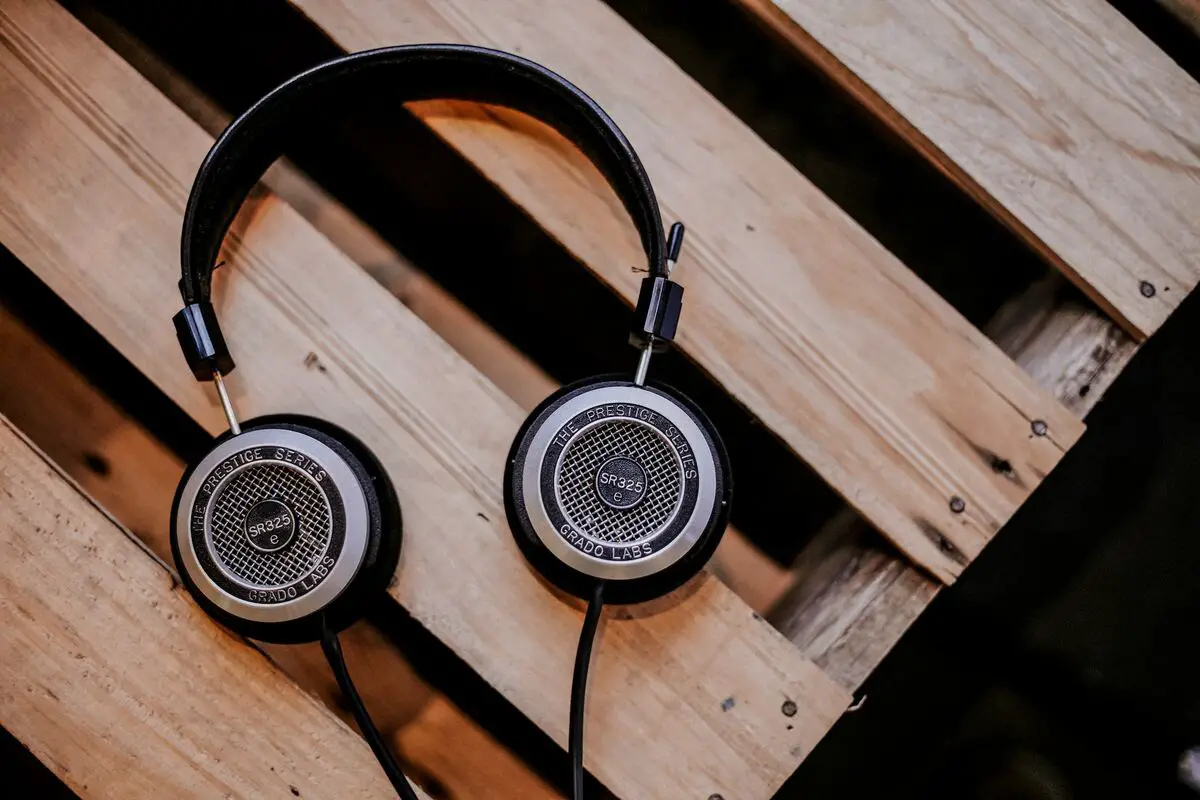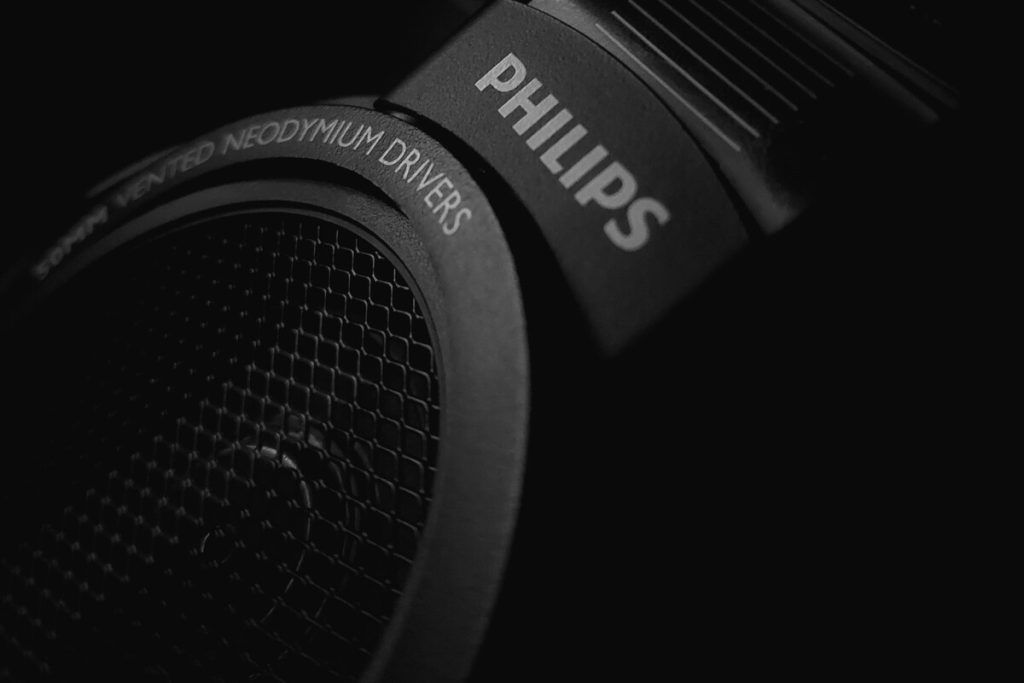You’re in the studio, laying down some sick beats, and you suddenly notice your favorite artist rocking a pair of headphones that look different. The ear cups have this open design, and you’re wondering, “What’s the deal with those?” Those are none other than open-back headphones. And if you’re Intrigued to learn more about open-back headphones and how they bring an immersive audio experience, keep reading.
What are open-back headphones? They’re a type of headphone where the ear cups have an open design, allowing air and sound to pass freely in and out, creating a natural, spacious listening experience that’s music to your ears.
What are open-back headphones?
Open-back headphones are a type of headphone design characterized by ear cups with perforations or openings on the outer side. Unlike closed-back headphones with sealed ear cups, open-back headphones allow sound to pass freely through the ear cups in both directions.

The open design of these headphones serves a specific purpose. It enables the flow of air and sound waves, creating a more natural and spacious audio experience. In addition, the perforations on the ear cups prevent sound from being trapped inside, resulting in a more open and transparent soundstage.
AKAI Professional MPK Mini MK3

AKAI Professional MPK Mini MK3
Why should you consider open-back headphones?
You might be thinking, “I’ve already got my trusty headphones. So why do I need this open-back stuff?” Open-back headphones bring a whole new level of depth and dimension, providing a different listening experience compared to closed-back headphones. They provide a perception of spaciousness, mimicking the feeling of listening to speakers in a room.
Imagine this: you’re chilling with your headphones on, vibing to some smooth jazz, and you can hear each instrument in its own space like you’re in the recording studio with the band. That’s the magic of open-back headphones – they create an “open” soundstage that makes you feel like you’re in the middle of the music.
How do open-back headphones work?
Open-back headphones allow air to pass through the ear cups to the speaker element. This lack of air pressure lets the speakers move more freely, producing a more natural, spacious sound. It’s kind of like open-air concerts versus indoor gigs. Sure, the indoor gig is loud, but the open-air concert has that big, spacious sound that feels like it’s all around you.
Let’s break it down into some easy-to-digest “dos and don’ts.”
| Do: | Don’t: |
|---|---|
| Use in quiet environments for the best experience | Crank up the volume in public spaces |
| Enjoy the spacious soundstage they offer | Expect them to block out background noise |
| Take advantage of their natural sound for critical listening | Use them in noisy environments |
When should you be using open-back headphones?
Open-back headphones are a dream come true in quiet, controlled environments. Think of your peaceful home studio, your chill bedroom, or any spot where you’re free from the chaos of outside noise. That’s where these headphones truly shine. They offer audio fidelity, giving you a sound that’s as close as possible to what the artist intended.
When you’re listening to your favorite album with open-back headphones, it’s like you’re hearing it for the first time again.
And it’s not just about music production. Open-back headphones are also a hit among audiophiles and casual listeners who value sound quality. When you’re listening to your favorite album with open-back headphones, you’re hearing it for the first time again. You’ll pick up on subtle details that you never noticed before.
Which music genres are best suited for open-back headphones?
Open-back headphones are especially great for music genres with complex arrangements and many different instruments. Think orchestral pieces, jazz ensembles, or layered rock tracks. You can hear each instrument in its own space with open-back headphones, creating a rich, immersive listening experience.

But here’s the thing. Music with heavy bass, like EDM or hip-hop, might not sound as punchy on open-back headphones as on closed-back ones. It’s not that the sound quality is bad, but the bass might not feel as intense because the sound isn’t trapped in your ears. So for those genres, you might want to stick to closed-back headphones.
Advantages and disadvantages of open-back headphones
Every piece of gear has its ups and downs, and open-back headphones are no exception. Here’s a quick rundown of the pros and cons to help you decide if they’re the right fit.
Advantages
Let’s start with the good stuff, shall we?
- Superior sound quality: Open-back headphones deliver a natural, spacious sound that’s hard to beat.
- Wide soundstage: These headphones make you feel like you’re in the room with the artist, giving you a more immersive listening experience.
- Comfort: Open-back headphones are generally lighter and more comfortable for long listening sessions because of their design.
- Less heat: The open design allows for better airflow, meaning your ears won’t get as hot during marathon mixing sessions.
Disadvantages
Now, let’s face the music and take a look at some potential downsides.
- Noise leakage: Because of their open design, these headphones leak sound. You’ll hear your surroundings, and others might hear your music.
- Lack of bass: While the sound quality is superior, open-back headphones might not deliver the punchy bass that some music genres demand.
- Not ideal for noisy environments: If you’re listening in a noisy environment, you’re going to hear everything around you. And if you’re cranking up the volume, people around you are going to hear your tunes.
If you want even more tips and insights, watch this video called “Open Back Headphones: Explained!” from the Open Back Headphones: Explained! YouTube channel.
Frequently asked questions (FAQ)
Do you still have questions about open-back headphones? Below are some of the most commonly asked questions.
Do open-back headphones leak sound?
Yes, open-back headphones are designed that way. They allow sound to escape through the back of the ear cups, which contributes to their spacious sound quality. But this also means others can hear your music, especially at higher volumes.
Are open-back headphones good for recording?
Well, it depends on what you’re recording. Open-back headphones are great for mixing because they offer a more accurate soundstage. But for recording vocals or instruments, can cause sound leakage into your mic. So, for that, closed-back headphones would be a better choice.
Can I use open-back headphones in public?
You could, but it might not be the best idea. Remember, open-back headphones don’t isolate sound well. You’ll hear the outside world, and the outside world will hear your music. So, unless you’re okay with sharing your tunes with everyone, they’re best used in a quiet, private space.
Conclusion
So, there you have it, folks! The lowdown on open-back headphones. They may not be the ‘reel deal’ for every situation, but when it comes to quality sound, they’re sounding pretty good, don’t you think? Did I cover everything you wanted to know? Let me know in the comments section below. I read and reply to every comment. If you found this article helpful, share it with a friend, and check out my full blog for more tips and tricks on audio production. Thanks for reading, and keep making those beats sound sweet!
Key Takeaways
This article covered everything you need to know about open-back headphones. Here are some key takeaways:
- Open-back headphones offer a natural and spacious sound quality, perfect for music genres with complex arrangements.
- They’re not the best for bass-heavy genres like EDM or hip-hop.
- Open-back headphones are ideal for quiet environments, not so much for noisy public places.
- They provide a unique listening experience, akin to being in the room with the musicians.
- The pros of open-back headphones include superior sound quality, wide soundstage, comfort, and less heat.
- The cons include noise leakage and lack of intense bass, and they’re not ideal for noisy environments.















